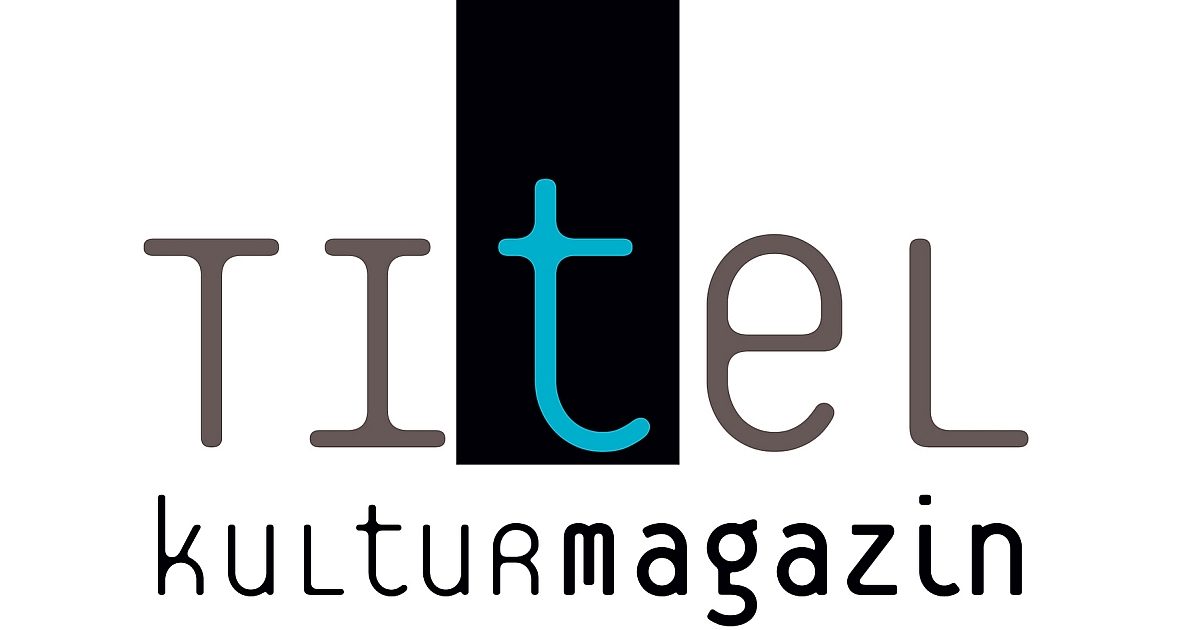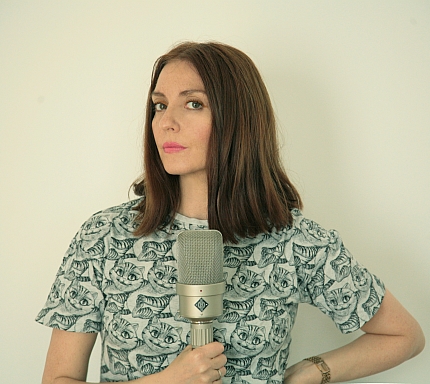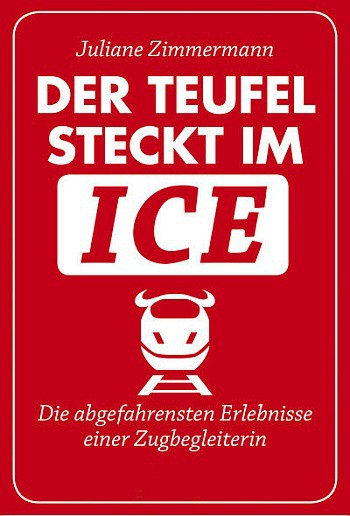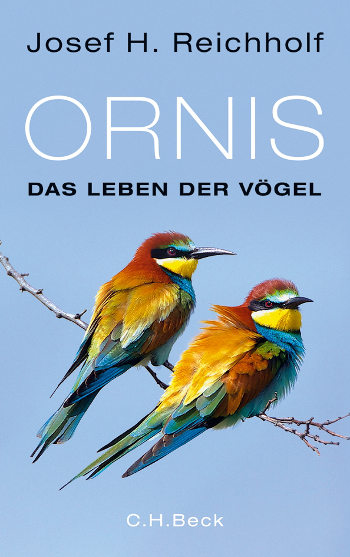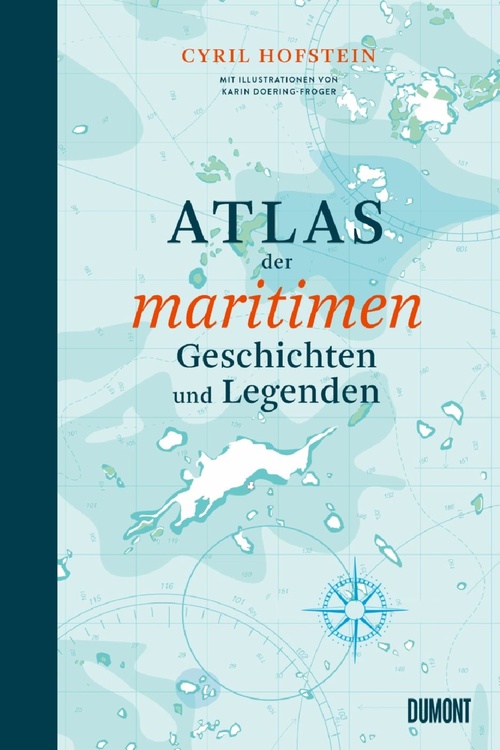Kulturbuch | Michael Engelhard: Ice Bear: The Cultural History of an Arctic Icon (Auszug)
Even in death, Knut arguably has the distinction of being the world’s most prominent polar bear. “It cannot be that the little Knut is completely forgotten,” said a woman who spent $5,000 on a public Knut memorial marker—one of several, in a city that teems with monuments commemorating two World Wars, the Holocaust, and the Iron Curtain. By MICHAEL ENGELHARD

Knut was a zoo polar bear born in 2006 in Berlin, a city that long before, had chosen a bear as its emblem. Knut’s story illuminates our troubled and troubling relations with nature. This bear had a rough start. His birth mother Tosca—afflicted, perhaps, by her circus career—rejected the little Eisbär and his twin brother, which four days later succumbed to an infection.
Controversy surrounded Knut from the beginning. His caregiver Thomas Dörflein bathed, bottle-fed, played with, slept next to, put baby oil on, and strummed lullabies on his guitar for the cub when it came out from an incubator. Animal rights activists and even one zoo director thought it would be better to let the cub die or euthanize it rather than have it raised like a human infant, which would lead to neurosis or turn it into an outsider among the zoo’s other bears. People for the Ethical Treatment of Animals (PETA) therefore sued the zoo for “extreme animal mistreatment.” Thousands of Knut supporters in turn e-mailed and wrote letters to keep the cub alive and with its “foster dad.” Children protested in front of the zoo, which stayed the course. (Financial interests could have influenced the decision.) Knut’s first public appearance, like that of famous debutantes, was a media event, with hundreds of journalists from as far away as Uzbekistan vying to snap his picture. A bear of the digital era, Knut had his own blog with first-person entries in several languages and a webcam inside his enclosure. The celebration of his first birthday was broadcast live on German television. The media covered each facet of Knut’s existence as if he were royalty—from teething pains and a yen for croissants and hammocks to the alleged moment of his conception, caught by a zoo visitor on a blurred photo.
 He had a first-rate pedigree also—his dam, Tosca, had starred in East German circus acts under the equally prominent yet bantam trainer Ursula Böttcher. Visitation soared to a high unequaled in the zoo’s 163-year history. Appearances of Knut and his keeper became a twice-daily ritual. Not everyone was taken with Knut, though. Kill Knut graffiti marred Berlin walls, and he received a death threat at the zoo, which led to police security measures. At the height of the craze, 30 percent of Germans in a survey admitted they had enough already of Knut.
He had a first-rate pedigree also—his dam, Tosca, had starred in East German circus acts under the equally prominent yet bantam trainer Ursula Böttcher. Visitation soared to a high unequaled in the zoo’s 163-year history. Appearances of Knut and his keeper became a twice-daily ritual. Not everyone was taken with Knut, though. Kill Knut graffiti marred Berlin walls, and he received a death threat at the zoo, which led to police security measures. At the height of the craze, 30 percent of Germans in a survey admitted they had enough already of Knut.
The trim, bearded Dörflein, who simply by proximity or his paternal care attracted a female following of his own, commented on less endearing behavior shown by the nation’s sweetheart. “He started to be threatening at a very early stage. Creeping up from behind and pouncing on his prey, he likes to do that with us” [the handlers]. Dörflein, to whom Berlin’s mayor awarded a medal, admitted ambivalent feelings about Knut, feelings familiar to any guardian of infants: “When he’s shat on everything and then bites me because he’s unsettled, it’s enough to blow a fuse sometimes.” A year later, animal welfare campaigners criticized the zoo again, this time for allowing Knut to kill and eat ten carp from the moat around his enclosure.
Whether or not the public was willing to acknowledge its nature, the bear was a bear after all, and it behaved like one.
Controversies continued. First, the Berlin Zoo settled with a zoo that owned Knut’s sire and claimed profits from Knut’s success. Then PETA demanded to castrate Knut to avoid inbreeding with another bear—which could threaten the genetic diversity of the German polar bear population. Eventually, Knut had a seizure and drowned at the age of four while facing an audience of hundreds. An autopsy revealed the cause of death to be encephalitis from an autoimmune disease. Despite his diminishing cuteness (and thereby, marketability), the adolescent bear still had a following. The outpouring of grief turned vitriolic when the city’s Museum of Natural History presented to the Berliners a life-size sculpture wearing their beloved Knut’s pelt. A spokeswoman stressed its artistic and educational value. “It’s important to make clear we haven’t had Knut stuffed,” she tried to appease the public.
Long before Knut became a facsimile of himself, he had become first an asset and then an industry. The formerly non-profit Berlin Zoo registered him as a trademark, and at the Berlin stock exchange shares in Zoologischer Garten Berlin AG promptly doubled their worth. The zoo announced that most of its proceeds would go toward nature conservation and research. (It also pointed out the importance of captive breeding programs for endangered species, one justification for present-day zoos.) Knut merchandise had long invaded stores and people’s lives. There were Knut-ringtones and cuddly toys, commemorative coins and candies, pop music hits and a weekly television show. There were DVDs, magazine stories, children’s books, posters, T-shirts, and several films. There were Knut porcelain figurines, packaged hotel tours, and bank credit cards to pay for all this. There were mock products even, such as the Knutburger—white fur between slices of cheese on a bun. Hollywood called. Taiwan, Japan, and China called. Soon after, Knut knock-offs began flooding the market. The zoo’s coffers overflowed. During Easter weekend, management had to limit the time each visitor could look at Knut to seven minutes.
The German government jumped on the media-circus bandwagon, issuing a stamp with year-old Knut that urged people to preserve nature worldwide. Ironically, this bear out of its element had advanced to eco-ambassador, representative of an endangered place. Generating a fortune, he was “a symbol of the economic potential of ecology.” The media at last put a face to the climate crisis, one more photogenic than Gore’s. It was a predator’s, but fluffy: Nature defanged. A board member of the zoo praised Knut for his ability to draw attention to the environment “in a nice way. Not in a threatening, scolding way.” The German Umweltminister met with Knut, became his godfather, and adopted him as the mascot for a bio-diversity conference and logo for an anti-global warming campaign. Media coverage of Knut’s 2007 debut drowned out the coinciding launch of the International Polar Year in Berlin, which sought to educate the public about climate change. The megastar overwhelmed the message. Eventually, Knut posed for the celebrity photographer Annie Leibovitz. Her pictures of him became covers for Vanity Fair; for the U.S. edition, the actor and climate activist Leonardo DiCaprio (in crampons on an Icelandic glacier) was Photoshopped onto the page with Knut.

These zoo bears were famous in their way. But they could not compete with the cub that first had stern Germans and then the rest of the world gushing like teenagers, the bear that caused a collective fever: Knutmania.
Many who mourned Knut’s premature death on that bleak March day in 2011 felt a personal bond, regarding him as a family member and comparing their feelings for him to those for their pets. He embodied their wish to see harmony between people and beasts restored, a new Utopia, Eden, Noah’s Ark—we were all in it together. Knut had been Berlin’s first Eisbär in over thirty years to survive infancy, overcoming adversity and slim odds, a tale universal in its appeal. The bear’s troubled existence somehow stood for that of his entire tribe. It reminded us of perils, shared fates, our own flesh-and-blood mortality. It reminded us of the innocence of childhood and of that, which, as a species, we think we have lost—and here the bear’s whiteness, its “purity,” mattered. Knut’s handler Dörflein had died before him, at age forty-four, from a heart attack, as if their fates were connected. Many who saw Knut felt seen by him in return and thereby, that they existed as part of a larger-than-human world. “When an animal looks at you like that, it changes everything,” his caregiver said after the cub had opened its eyes for the first time.
This reciprocity of glances and assumed “understanding,” some critics are quick to point out, could merely be projected desire:
The public purpose of zoos is to offer visitors the opportunity of looking at animals. Yet nowhere in a zoo can a stranger encounter the look of an animal. At the most, the animal’s gaze flickers and passes on. They look sideways. They look blindly beyond. They scan mechanically. They have been immunized to encounter, because nothing can anymore occupy a central place in their attention.
There is an obvious flip side to the empathy zoo polar bears evoke. Like domestication, captivity is an infantilizing situation. It takes the animal’s freedom, depriving it of its choices and causing dependency on an appointed custodian.
The continuing frenzy over zoo polar bears, stoked by the media, has socio-cultural roots also. Exposure to polar bears and bear-related issues increased the demand for more of the same. Before climate change and its effects upon wild polar bears caught the public’s attention, interest in the bears had waned, and many zoos had downsized or discontinued their polar bear breeding programs and exhibits. With intensive press coverage of the issue in the new millennium visitor demand for the animals rose, and some zoos struggled to fill their vacancies, as wild-capture is no longer an option. When field biologists affiliated with the International Union for Conservation of Nature suggested that captive polar bears might play a key role in boosting wild populations, the bear became a “focus species” for some zoos and captive bears more acceptable to conservation-minded audiences. But zoos have to make choices about how to spend limited conservation funds and therefore choose threatened species they consider most likely to rebound in the wild. For some, that excludes the polar bear.

Abb: PD
Who, really, is immune to the charms of these tots, their cuffing and wrestling matches, the tipsy-sailor gait, the mewling, stub-nosed, button-eyed somersaulting, or nipping at mom’s heels? Who would want them to lose their sea-ice home?
The Austrian Nobel-Prize-winning researcher of animal behavior Konrad Lorenz first surmised in 1949 that we strongly respond to physical features and behavior of the mammalian young, not just those of our own species. A shortened nose, big eyes, a disproportionately large head, round and soft body features paired with playfulness or curiosity turn us all gooey inside. It has since been proven that cuteness triggers nurturing instincts in adults, and the urge to protect. Recent research suggests that pictures of puppies or babies stimulate the pleasure centers of the brain that are also aroused by sex, drugs, or a good dinner. As an evolutionary adaptation, this preference for immature traits makes parents care for their offspring; our paternal and maternal feelings now could affect the survival of polar bears.
The cuteness of cubs notwithstanding, occasional lapses in image building occur. On its website, Polar Bears International describes the nearly hairless, blind newborn as looking “like a big white rat.” But feeding on milk with the same fat content as whipping cream, cubs quickly morph into “22 to 26 pounds of pure adorableness.”
 Walt Disney’s documentary White Wilderness (1958)—known for its staged lemming “suicide” scenes—delighted Baby Boomers with a polar bear cub tumbling down an icy slope (also possibly staged), one of the earliest cinematic examples of exploiting the polar bear’s cuteness. The theme can be traced from that scene to the BBC’s 2011 mini-series Frozen Planet, narrated by Sir Richard Attenborough. Its episodes are structured along the seasonal round of polar bears, with a bombastic soundtrack and subtly anthropomorphized, with the requisiteshots of bear cub antics.
Walt Disney’s documentary White Wilderness (1958)—known for its staged lemming “suicide” scenes—delighted Baby Boomers with a polar bear cub tumbling down an icy slope (also possibly staged), one of the earliest cinematic examples of exploiting the polar bear’s cuteness. The theme can be traced from that scene to the BBC’s 2011 mini-series Frozen Planet, narrated by Sir Richard Attenborough. Its episodes are structured along the seasonal round of polar bears, with a bombastic soundtrack and subtly anthropomorphized, with the requisiteshots of bear cub antics.
As nature documentaries and similar artifacts show, popular culture largely confines polar bears to limited scripts, to parts subordinate to our own. The bear is roly-poly immature, maternal, or else a combative male. These, of course, are stereotypical roles in the modern nuclear family. In a socio-economic context, the bear functions as marketing tool and political rallying point.
What explains Knut’s hold on us? What feeds our need for proximity, for contact with other life forms? We nurse oil-slicked otters and eagles back to health. We radio-collar caribous to understand their timeless but timed rounds. We keep bears in cages, to edify, engage, enchant, entertain. We make room for wolves where we used to poison them and, just as absurdly, installed mountain goats in Nevada and Colorado, where trophy hunters can chase them. Biologists such as E.O. Wilson claim that an attraction to other life forms has lain embedded in our genes since animals shaped hominid nature on Africa’s steppes; hunter-gatherers acknowledge this debt with respect. Evolutionary psychologists also warn us that we neglect this relationship at the cost of societal dysfunction. To further complicate matters, this innate drive (“biophilia”) can manifest as the opposite: a dark urge, born of greed or fear, to abuse and eradicate our brethren-on-earth. Be they dachshunds or Komodo dragons, head lice or butterflies, cobras or Siamese cats—these others leave few people unmoved. To understand how Knut and his kind came to live in our midst and our minds is to understand human nature.
| MICHAEL ENGELHARD
| Titelfoto: Knut am 24.03.2007 im Zoologischen Garten Berlin. Abb: JENS KOSSMAGK
Titelangaben
Michael Engelhard: Ice Bear: The Cultural History of an Arctic Icon
Seattle: University of Washington Press. 14. November 2016
304 Seiten, 28,49 Euro
Abgedruckt mit Genehmigung von University of Washington Press
| Erwerben Sie dieses Buch portofrei bei Osiander


